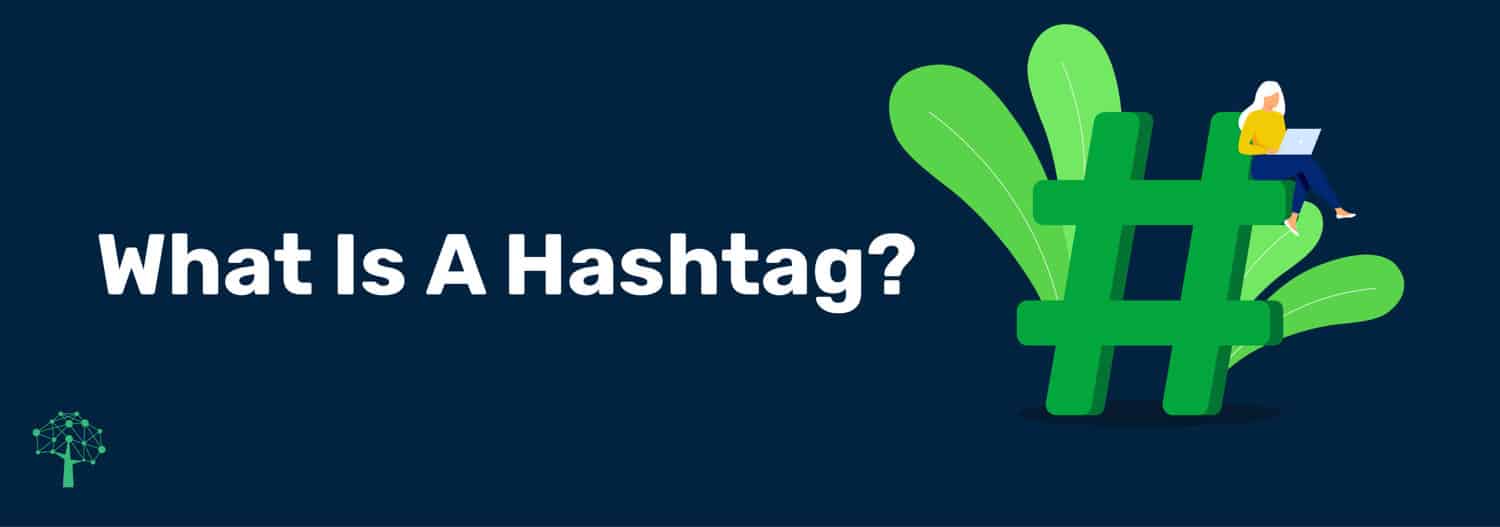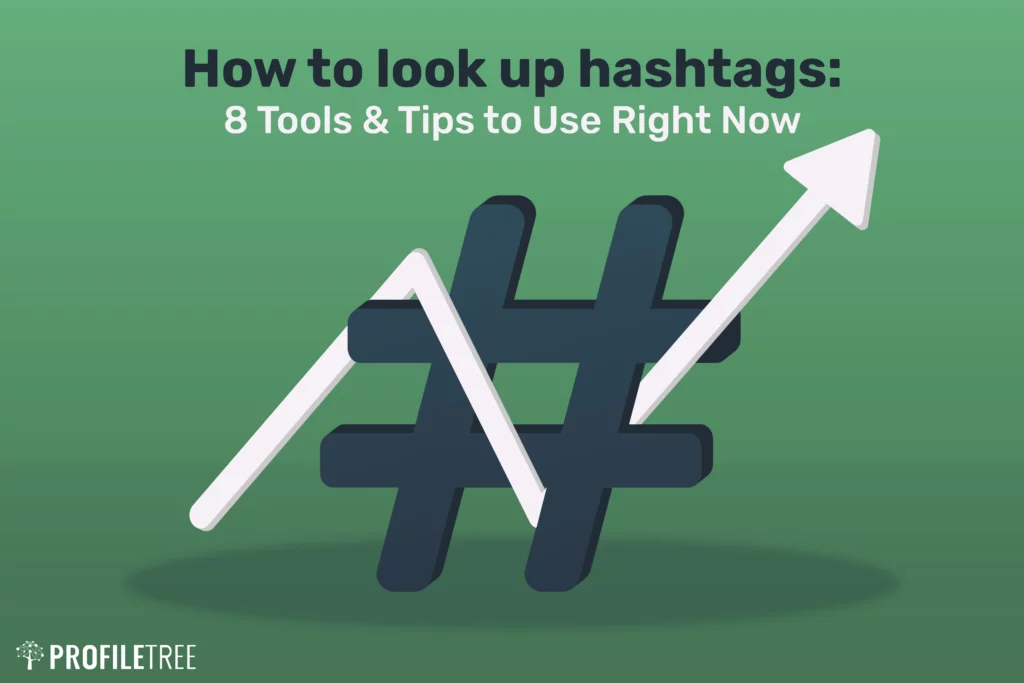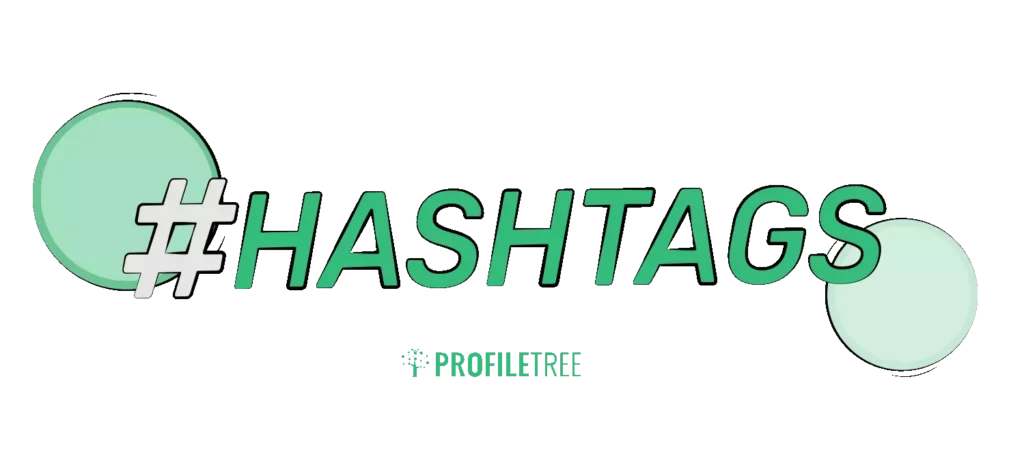In the ever-evolving social media landscape, hashtags have emerged as a ubiquitous and powerful tool for connecting, engaging, and amplifying voices. These seemingly simple symbols, represented by the pound sign (#), hold immense potential to navigate the vast expanse of social media and make your message resonate with a wider audience.

What is a hashtag, and how can you make hashtags work harder for you and your business?
We’ll explain how they came about and talk through some great tips to get smarter with hashtags…

Table of Contents
What Is A Hashtag? When They Are Used
A hashtag is a metadata tag preceded by the hash symbol (#) that categorizes and tracks content on social media platforms. It serves as a searchable keyword that allows users to discover and engage with content related to specific topics, trends, or events. By incorporating relevant hashtags into your posts, you can connect your content to broader conversations, attract a targeted audience, and increase the visibility of your message.
The Significance of Hashtags

Hashtags have transcended their humble beginnings as mere organizational tools and evolved into powerful instruments for social media engagement and marketing. They play a crucial role in:
- Content Discovery: Hashtags provide a means for users to discover content relevant to their interests, enabling them to connect with like-minded individuals and stay updated on trending topics.
- Community Building: Hashtags foster a sense of community by connecting users who share similar interests and passions. They create a virtual space for individuals to interact, exchange ideas, and build relationships.
- Brand Awareness and Marketing: Businesses leverage hashtags to enhance brand awareness, promote products or services, and engage with potential customers. Targeted hashtag campaigns can drive traffic to websites, increase social media following, and boost brand recognition.
- Social Movements and Advocacy: Hashtags have emerged as powerful tools for social activism and advocacy. They amplify voices, raise awareness about important issues, and mobilize collective action.
Harnessing the Power of Hashtags
To effectively utilize hashtags and maximize their impact, consider these strategies:
- Research and Use Relevant Hashtags: Identify hashtags that align with your content, target audience, and desired outcome. Use a mix of popular and niche hashtags to reach a broader audience while maintaining relevance.
- Limit Hashtags for Clarity: Avoid overwhelming your posts with excessive hashtags. Stick to a few relevant and well-chosen hashtags to ensure your message remains clear and concise.
- Place Hashtags Strategically: Incorporate hashtags naturally within your post, avoiding placing them at the beginning or end of your message. Integrate them into the flow of your content for seamless integration.
- Monitor Hashtag Performance: Track the performance of your hashtags to gauge their effectiveness and identify trends. Use analytics tools to understand which hashtags resonate with your audience and refine your strategy accordingly.
Hashtags, though seemingly simple, hold immense power to connect, engage, and amplify voices in the social media realm. By understanding their significance and mastering their usage, you can harness their potential to achieve your social media goals, whether it’s building a community, promoting a brand, or advocating for a cause. So, embrace the power of the hashtag and let your message resonate across the vast expanse of social media.
The Origins of the Hashtag: From IRC to Social Media Dominance
The hashtag, represented by the pound sign (#), traces its roots to Internet Relay Chat (IRC), a platform for real-time communication that emerged in the late 1980s. In IRC, users employed the hash symbol to categorize and organize conversations, enabling easy navigation and identification of specific topics or channels.
In 2007, the hashtag made its debut on the social media scene when Chris Messina, a social media consultant, proposed its adoption on Twitter. Initially met with skepticism, the hashtag quickly gained traction, becoming an integral part of Twitter’s culture and functionality.
The Evolution of Hashtag Usage: From Niche Tool to Global Phenomenon
As social media platforms proliferated, the hashtag’s reach and influence expanded beyond Twitter, becoming a ubiquitous tool for communication, engagement, and marketing. Its usage has evolved significantly over time, encompassing a diverse range of applications:
- Content Discovery and Organization: Hashtags enable users to discover and organize content related to their interests, facilitating the exploration of trending topics, events, and communities.
- Community Building and Engagement: Hashtags foster connections between individuals who share similar passions, creating virtual spaces for interaction, discussion, and collaboration.
- Brand Awareness and Marketing: Businesses leverage hashtags to promote products, services, and campaigns, amplifying their reach and engaging with potential customers.
- Social Advocacy and Movements: Hashtags have become powerful tools for social activism and advocacy, raising awareness about important issues, mobilizing collective action, and amplifying marginalized voices.
Notable Examples of Hashtag Usage
Throughout its evolution, the hashtag has been instrumental in numerous social and marketing campaigns, demonstrating its immense potential for impact:
- #OccupyWallStreet (2011): The hashtag played a crucial role in mobilizing and organizing the Occupy Wall Street movement, amplifying its message of economic inequality and social justice.
- #IceBucketChallenge (2014): The hashtag-driven charity challenge raised millions of dollars for ALS research, showcasing the power of social media activism and viral campaigns.
- #MeToo (2017): The hashtag ignited a global movement against sexual harassment and assault, empowering countless individuals to share their stories and break the silence.
- #BlackLivesMatter (2020): The hashtag rekindled the conversation about racial injustice and police brutality, sparking protests and calls for reform.
The Hashtag’s Enduring Significance
The hashtag has transformed the way we communicate, engage, and amplify our voices on social media. Its evolution from a niche tool to a global phenomenon reflects its versatility and ability to connect individuals across diverse communities. As social media continues to evolve, the hashtag will undoubtedly remain a powerful tool for expression, engagement, and social change.
What Is A Hashtag? Why Hashtags
The American pound sign, or what is sometimes called the hash sign (“#”), has been used in various computer applications for decades.
In modern use, the idea is that a person creating a message on social media such as Twitter or Instagram would create a word or phrase with no spaces between them (sometimes with words held together with an underscore) and precede it with a hashtag or American pound sign.
This use of the special character makes the word or phrase easily searchable on social media.
What Is A Hashtag? How They Were First Used
The first signs of the modern hashtag came about in August 2007 on Twitter by a user named Chris Messina. The practice soon took off, starting with the 2007 San Diego fires. This continued with the 2009-2010 protests in Iran, when both the English and Persian hash characters were used to make messages more readily searchable.
Bowing to the inevitable, Twitter began to hyperlink hashtags in tweets for search results. In 2010, Twitter began listing “Trending Topics” for heavily searched hashtags. Twitter also created an algorithm to ensure that no one tries to spam trending hashtags.
While the use of hashtags started on Twitter and remains very popular on that social media network, it has spread to other social media such as Facebook and Instagram. Hashtags have even extended to more traditional media, such as television.
A newspaper article or a TV broadcast might include a hashtag for the subject being presented, encouraging readers and viewers to discuss the show on social media.
What Is A Hashtag? Examples of Hashtags

Let’s sat you are discussing a character in a popular movie, for example “Avengers: Infinity War?” (By the way, the name of the movie itself is likely to be preceded by an at sign “@” as in “@InfinityWarM.”
The names of the characters would likely also be preceded by an at sign, such as “@Iron_Man” or “@Thanos.” You might tag your discussion as “#ThanosisLame” or “#WhatdidDrStrangeSee?” The use of those particular hashtags will cause other users to search from the threads in social media and join in.
A lot of hashtags are used to discuss current events. Examples might be “#SpaceXFalcon9Launch,” “#WorldSeriesBaseball2017,” or “#2018ElectionDebate.”
Sometimes in heated political threads, a hashtag can be shorthand for expressing a political opinion. “#ImpeachTrump,” ”#AbortionisMurder,” “#VoteLabour,” or “#Taxesaretoohigh.” The use of hashtags in this manner may invite responses with opposing hashtags such as “#MakeAmericanGreatAgain,” “#MyBodyMyChoice,” “#VoteTory,” or “#RaiseTaxes.”
Hashtags can also be used as a call for action. They can include “#BoycottAcme,” “#SupportSmith,” or “#StoptheViolence.”
The use of hashtags in social media advertising has become common. Let’s say that you have a business selling barbecue grills. Besides your company brand name hashtag you might also use phrases like “#ThrilloftheGrill” and “#cookingwithfire.” These types of hashtag campaigns work best when you also use them in both print and television advertising, directing potential customers to your social media accounts.
What Is A Hashtag? Popular Twitter Hashtags
Hashtags have been around Twitter for a little more than ten years. Some of the most all-time popular ones include:
#BlackLivesMatter – denoting a movement in the United States
#EdBallsDay – started when British Labour MP Ed Balls tweeted just his own name in 2011, considered one of the most ‘epic fails’ in social media history
#theDress – refers to a famous photo of a dress that was either blue and black or white and gold depending on who was looking at it. The dress was not only a massive science experiment about how different people perceive color but the subject or many heated arguments.
#HeforShe – started as a call to action by the United Nations Women’s Campaign to raise consciousness among men about women’s issues and inspire them to support gender equality
#IceBucketChallenge – became viral in 2014 to raise awareness about ALS and to raise funding for research into treatments for the disease.
What Is A Hashtag? How to Use Hashtags on Instagram
The main difference between Twitter and Instagram is that the former involves text, though you can link to web pages, images and video, while you upload images and video to the latter. Therefore, the method of using hashtags on Instagram is different than on Twitter.
When you upload a picture or video, you can choose then add a filter function and then place your hashtag in the caption field. Examples would include “#Garden,” “#SelfPortrait,” or “#HawaiiVacation.” You can edit the caption field for preexisting Instagram posts or add a hashtag in a comment.
Best practices for boosting engagement with hashtags:
1. Research and Use Relevant Hashtags
The most important step to boosting engagement with hashtags is to use relevant hashtags that align with your content and target audience. Avoid using generic or overused hashtags that will get lost in the noise. Instead, focus on finding niche hashtags that are specific to your industry or topic.
2. Use a Mix of Popular and Niche Hashtags
Using a mix of popular and niche hashtags will help you reach a wider audience while also maintaining relevance. Popular hashtags will get your content seen by a lot of people, but niche hashtags will attract a more engaged audience that is more likely to interact with your content.
3. Limit Hashtags for Clarity
Avoid using too many hashtags in your posts. Too many hashtags can make your content look cluttered and can make it difficult for people to read. Stick to a few relevant and well-chosen hashtags to ensure your message remains clear and concise.
4. Place Hashtags Strategically
Incorporate hashtags naturally within your post, avoiding placing them at the beginning or end of your message. Integrate them into the flow of your content for seamless integration.
5. Monitor Hashtag Performance
Use analytics tools to track the performance of your hashtags and identify trends. This will help you understand which hashtags are resonating with your audience and determine which hashtags you should continue to use and which ones you should adjust.
6. Participate in Hashtag Challenges
Hashtag challenges are a great way to get your content seen by a wider audience. When participating in a hashtag challenge, use the challenge’s hashtag along with your own relevant hashtags to increase your visibility.
7. Interact with Other Users
Engaging with other users who are using the same hashtags as you is a great way to boost your own engagement. Like and comment on other users’ posts, and answer questions that they ask. This will help you build relationships with other users and increase your visibility.
8. Use Hashtags Consistently
The more you use hashtags, the more likely it is that people will start to associate your content with certain hashtags. This will make it easier for people to find your content when they are searching for those hashtags.
9. Use a Hashtag Management Tool
A hashtag management tool can help you save time and track your hashtag performance. These tools can help you find relevant hashtags, schedule posts with hashtags, and track the performance of your hashtags over time.
10. Use Hashtags on Multiple Platforms
Don’t just use hashtags on one social media platform. Use them on all of the platforms where you are active. This will help you reach a wider audience and increase your overall engagement.
Tips for creating branded or campaign hashtags:
1. Keep it short and memorable. A long or complicated hashtag is unlikely to be remembered or used by others. Aim for a hashtag that is no more than five or six words long and is easy to spell and pronounce.
2. Make it relevant to your brand or campaign. The hashtag should be relevant to your brand or campaign and reflect its overall message or theme. Avoid using generic or overused hashtags that don’t specifically relate to your brand or campaign.
3. Use unique or original words. If possible, try to use words in your hashtag that are unique or original to your brand or campaign. This will help your hashtag stand out from the crowd and make it more likely to be noticed.
4. Check for availability. Before you finalize your hashtag, make sure it is not already being used by another brand or campaign. You can search for hashtags on social media platforms like Twitter and Instagram to see if they are already in use.
5. Make it easy to use. Your hashtag should be easy for people to use. This means that it should be spelled correctly and should not contain any special characters or symbols that are difficult to type.
6. Promote your hashtag. Once you have created your hashtag, you need to promote it so that people start using it. You can promote your hashtag on your social media channels, in your email marketing, and on your website.
7. Encourage user-generated content. Encourage your followers to use your hashtag by running contests or giveaways. You can also encourage them to share their own content with your hashtag by using a call to action (CTA).
8. Use your hashtag consistently. Use your hashtag consistently across all of your social media platforms and in your marketing materials. This will help people to associate your hashtag with your brand or campaign.
9. Track your hashtag performance. Use analytics tools to track the performance of your hashtag and see how it is being used. This will help you to determine whether your hashtag is effective and make adjustments as needed.
Additional tips for creating branded or campaign hashtags:
- Use a hashtag generator to help you come up with ideas.
- Ask your followers for suggestions.
- Run a poll to see which hashtag your followers prefer.
- Use your hashtag in your social media bio.
- Use your hashtag in your email signature.
- Include your hashtag in your blog posts and website content.
FAQs
Q: How long should a branded or campaign hashtag be?
A: Aim for a concise and memorable hashtag, typically no more than five or six words long.
Q: How do I know if my hashtag is original?
A: Conduct thorough research, including social media searches, to ensure your hashtag is unique and not in use by another brand or campaign.
Q: How do I promote my hashtag effectively?
A: Utilize social media platforms, email marketing, and website content to actively promote your hashtag. Engage your followers with contests, giveaways, and CTAs that encourage hashtag usage.
Q: How often should I use my hashtag?
A: Maintain consistency in using your hashtag across social media platforms and marketing materials. Avoid excessive usage, which can appear spammy.
Q: How do I track hashtag performance?
A: Employ analytics tools to monitor hashtag usage, engagement metrics, and overall campaign performance. Use these insights to refine your hashtag strategy.
Summary: General Rules for Hashtags
No matter what social media platform you use, some general rules will help make the most of hashtags:
Keep it simple – Avoid the use of long, complicated strings of words in your hashtags. A single word or a phrase of not more than three or four words is best.
Keep it relevant – Nothing is more annoying than clicking on a hashtag only to find content that is not relevant to its subject. This is considered spamming.
Keep it specific – The best hashtags denote a specific subject or concept. These are more easily searchable and will make it easier for your content to show up without hundreds or thousands of other posts crowding it out.
Brand hashtags, by the way, should not include your actual brand name but should represent what your brand stands for. For instance, instead of using “#AcmeBarbecueGrills” instead use“#FoodTastesBetterWithFire.”
Good luck!
Our FREE ProfileTree knowledge archive… Facebook Marketing Solutions | Facebook Marketing Services | Facebook Video Ads | Get More Likes | Boost your Organic Search
Unmissable QUICK READ What Is? guides… Snapchat | Google+ | An App | YouTube Rewind | YouTube | Tumblr | Facebook | Google Index | SnapChat Geofilter | Twitter Handle | SEO Title | Google Drive | Internet of Things


